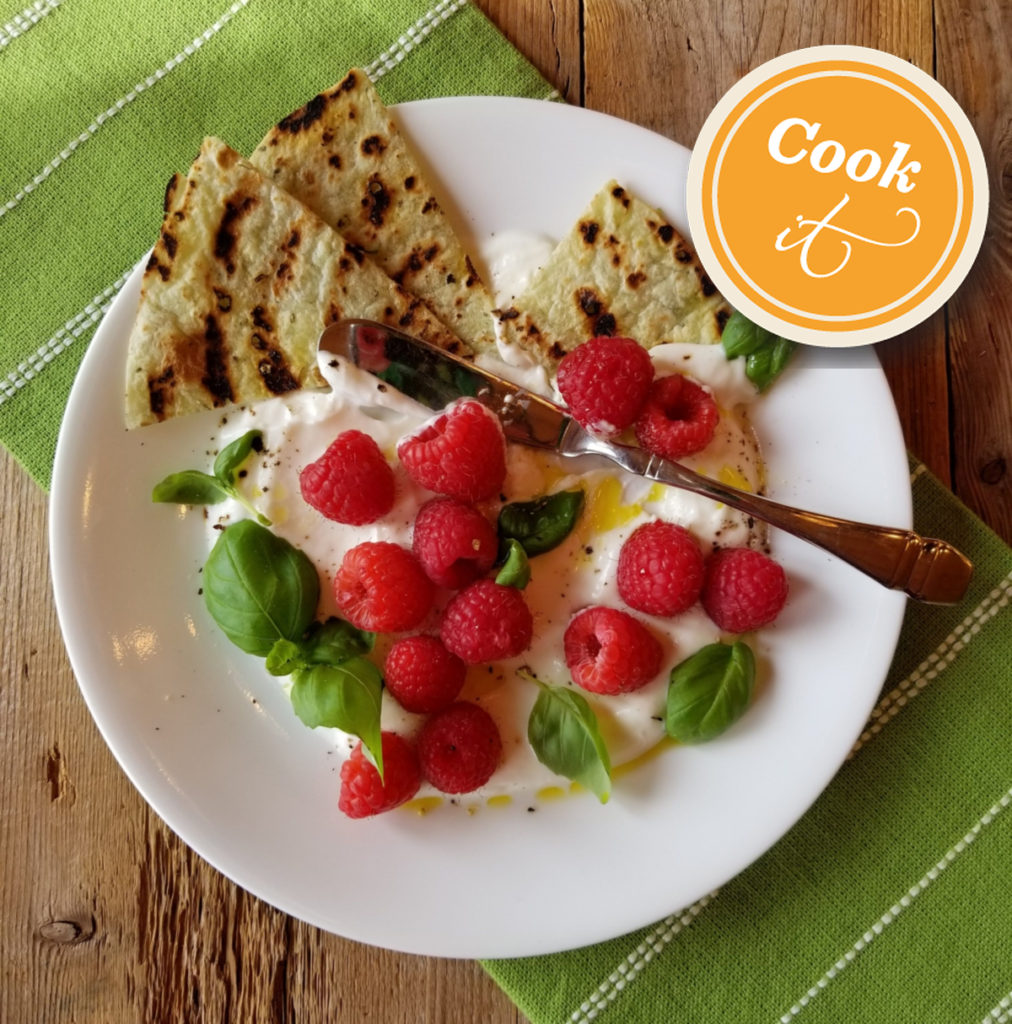Montreal and Quebec City may be the rockstars of Quebec tourism but cross the St Lawrence River to the southern parts of the province and you’ll find yourself in a different world, where the pace of life is slower, the scenery softer. It doesn’t matter if you speak English, French, or a mashup of both, the welcome will be the same.
I took a road trip through Southern Quebec last September, following a zigzag route through a bucolic landscape of late summer fields, dappled hedgerows, meandering rivers and rolling hills dotted with vintage farmhouses and charming historic towns. It was the perfect time to be enjoying the fruits of the season in Quebec’s agricultural heartland. Here are some of the highlights of my trip.
Centre-du-Québec
Southern Quebec, the region that lies between the St Lawrence River and the US borderlands is divided into three sub-regions: Centre du Québec, Montérégie and Cantons d’Est, (Eastern Townships), each with their own unique appeal. Centre-du-Québec is known as the breadbasket of the province. Vegetable and fruits, maple sugar bushes, livestock, poultry and bees all flourish in this beautiful region that stretches from the St Lawrence River to the Appalachian foothills.
Manoir du Lac William is an historic country lodging in Saint-Ferdinand, known for its lakeside views and fine dining. The evening’s table d’hote menu was an excellent place to begin my exploration of the region’s fabled terroir. And it was off to a great start with a board of local charcuterie, homespun pickled vegetables and dabs of flavoured mustards. Then followed a grilled lake trout with a shrimp and asparagus studded orgetto (barley cooked in the style of risotto). Breakfast the following morning, with fresh raspberries, flaky croissant and a creamy mushroom omelette, was equally unpretentious and beautifully prepared.
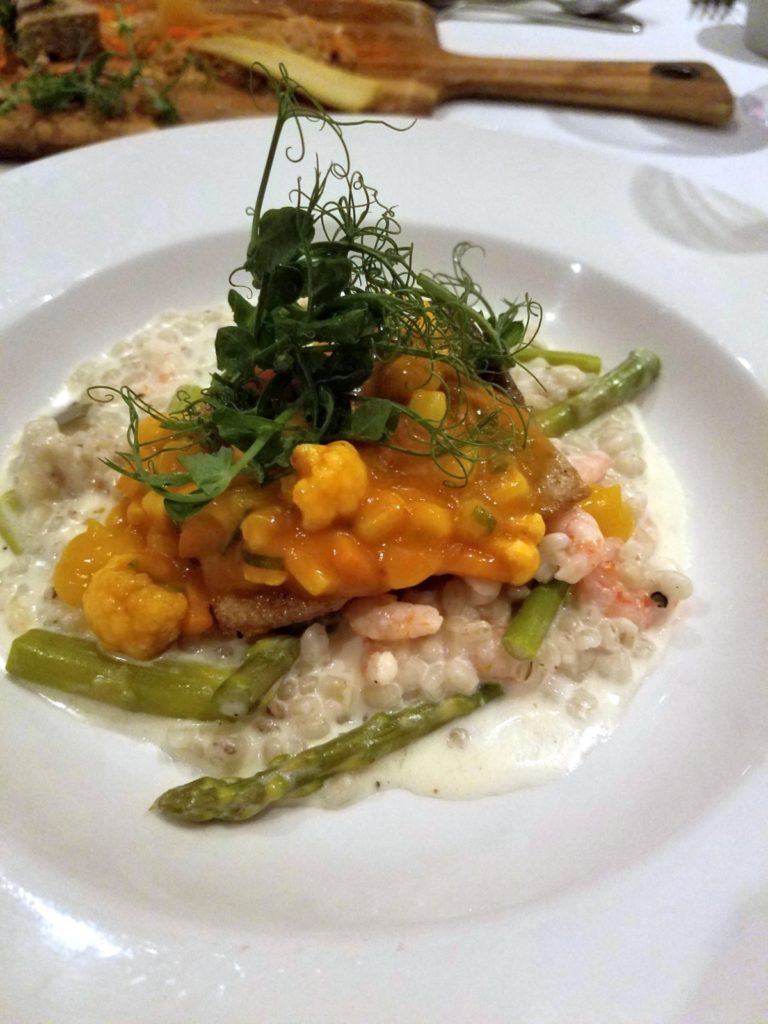
In the town of Plessisville, ‘The World Capital of Maple,’ Carrefour de l’Érable is a showcase for the fine products that local chefs have access to, particularly maple syrup, honey and cranberries. In addition to educational displays, the centre offers a maple syrup tasting bar, gelato and pastry counter and a boutique stocked with locally made gourmet foods.
The charming little village of Sainte-Élizabeth-de Warwick is home to one of Quebec’s premier artisanal cheesemakers — Fromagerie du Presbytère, housed in the former parish church. The pews are gone and in their place, a robot washes great wheels of cheese and places them on racks to mature. Cheese tasting boards are available at the presbytery next door. I loved Laliberté, a bloomy, soft cheese and washed-rind Louis d’Or. You’ll pass the farm that provides the milk for their award-winning cheeses on the way out of town.
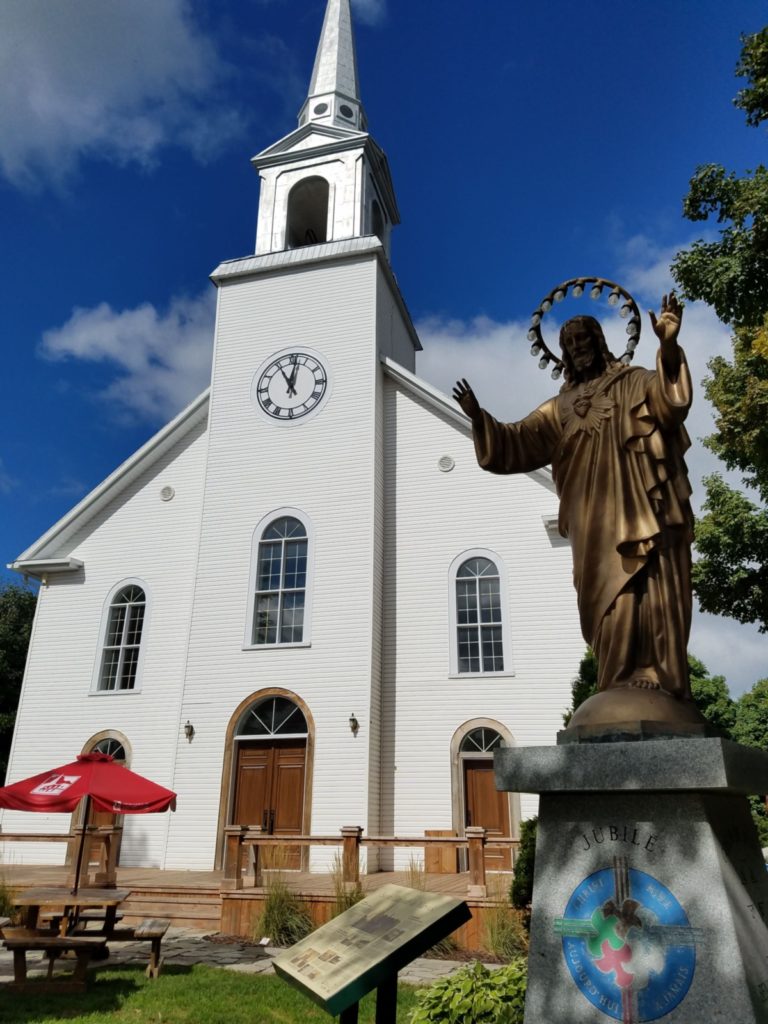
Parc Marie-Victorin in nearby Kingsey Falls is named for the monk who founded Montreal’s botanical garden and first documented the botany of southern Quebec. There’s plenty to see here, including giant mosaicultures, a tropical greenhouse, edible plantings, evanescent flower gardens and a gift shop with botanical themed merchandise.

In Drummondville, I was fascinated by the Village Quebeçois d’Anton, which recreates the history of Quebec in the period from 1810-1930. An artfully updated traditional meal at the village café captured the bounty of the season. I sampled a delicate vegetable soup; a just-picked salad with grapes and saucisson; boulettes (meatballs in gravy) and osso buco, with home-made pickled beets and a chunky fruit ketchup on the side. I had always imagined Canada’s first European settlers surviving on stodgy peasant fare and I was delighted to be proven so deliciously wrong!
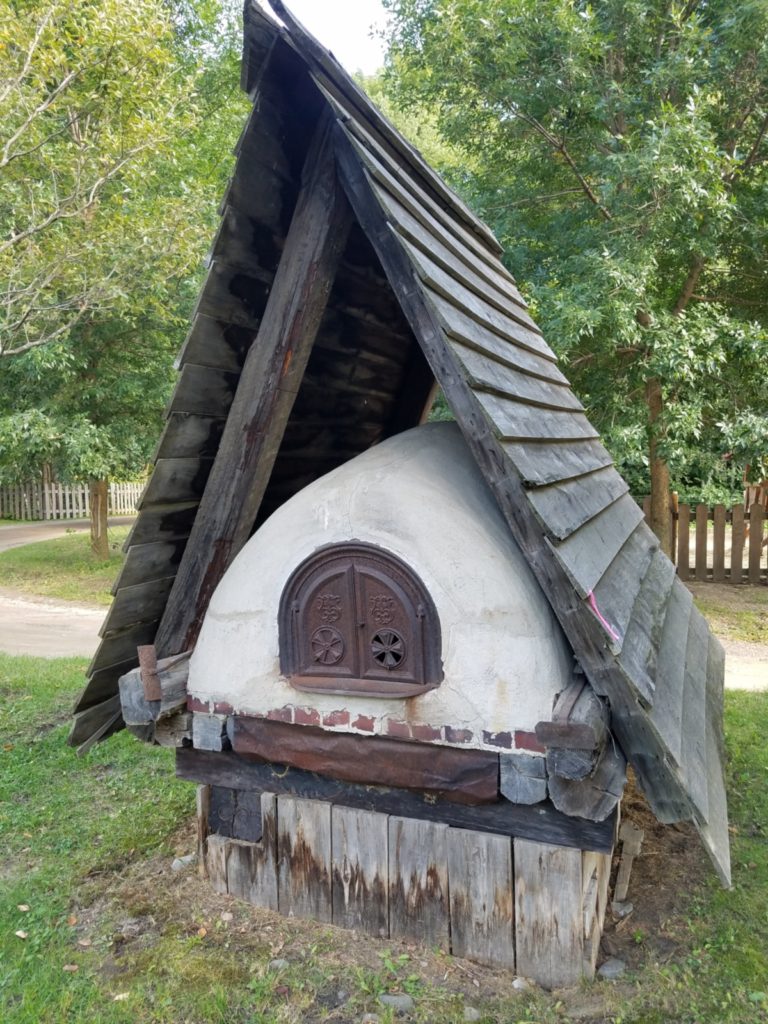
My last stop in Centre-du-Québec was at Rose Drummond, a sweet little shop offering coffee, cakes and gorgeous flowers, grown in Quebec’s only cut-flower greenhouses, which occupy two hectares out back.
Montérégie
On to Montérégie, a hilly region lying between the island of Montreal and the Appalachian Mountains. This idyllic landscape is intersected by the Richelieu and Yamaska Rivers, important trade routes in earlier times. Overlooking the gurgling rapids at the mouth of the Richelieu River stands 17th-century Fort-Chambly, now a National Historic Site of Canada, where, along with a history lesson, I tasted naturally fizzy spruce beer and a (then) novel New World commodity — chocolate.
The Richelieu is a broad and beautiful stretch of water, bordered by fertile farmland and the enchanting Auberge Handfield. Louis-Robert Handfield’s ancestral farmhouse, built in 1850, offers a traditional Quebecois experience that includes gourmet dining. The number of luxury motor yachts berthed at the inn attest to its popularity among those accustomed to the finer things in life. Dinner in the cosy parlour, with rustic beams and twinned stone hearths, was a celebration of local, seasonal fare, including a cocotte of braised field mushrooms; catch of the day (halibut) with a garlic flower coulis and tender farm vegetables (parsnip and carrots); and homemade coffee cake with maple-flavoured buffalo yogurt and fresh berries. A meal here, with gracious Handfield hospitality, is worthy of a day trip from Montreal (less than an hour away) or as the raison d’etre for a longer stay.

Ferme Guyon in Chambly is a brilliant place to discover the sheer abundance of local ingredients available in this part of the province. A huge selection of artisanal foods, produce, charcuterie, cheeses, ciders, wines and beers fill a warehouse–sized retail store. Sébastien Dion (scion of the Unibrou beer empire) has developed a multifaceted agritourism attraction that includes horticulture, an animal petting barn and a butterfly habitat. There’s also a classroom that keeps alive the traditional skills of butter churning, breadmaking, beekeeping and weaving.

A white butterfly — flitting, intently, from flower to flower — welcomed me to Le Fruit Défendu, a pretty little gite on a country road in Rougemont. Life partners Dominique Guénette and José Calloo have turned an ancient yellow farmhouse (with a magnificent vintage cookstove centre stage) into a charming boutique inn and restaurant. My table d’hôte lunch, on a terrace surrounded by fields of corn and sunflowers, reminded me of halcyon days spent in France. From José’s kitchen came vegetable soup with warm, crusty bread; pork loin, roast potatoes and a compote of apples and berries; and a salad of baby arugula, pickled cucumbers and cherry tomatoes, all borne to the table by Dominique. The finishing touch, Rougemont apple crumble, was as sweet and warm as the lazy afternoon.
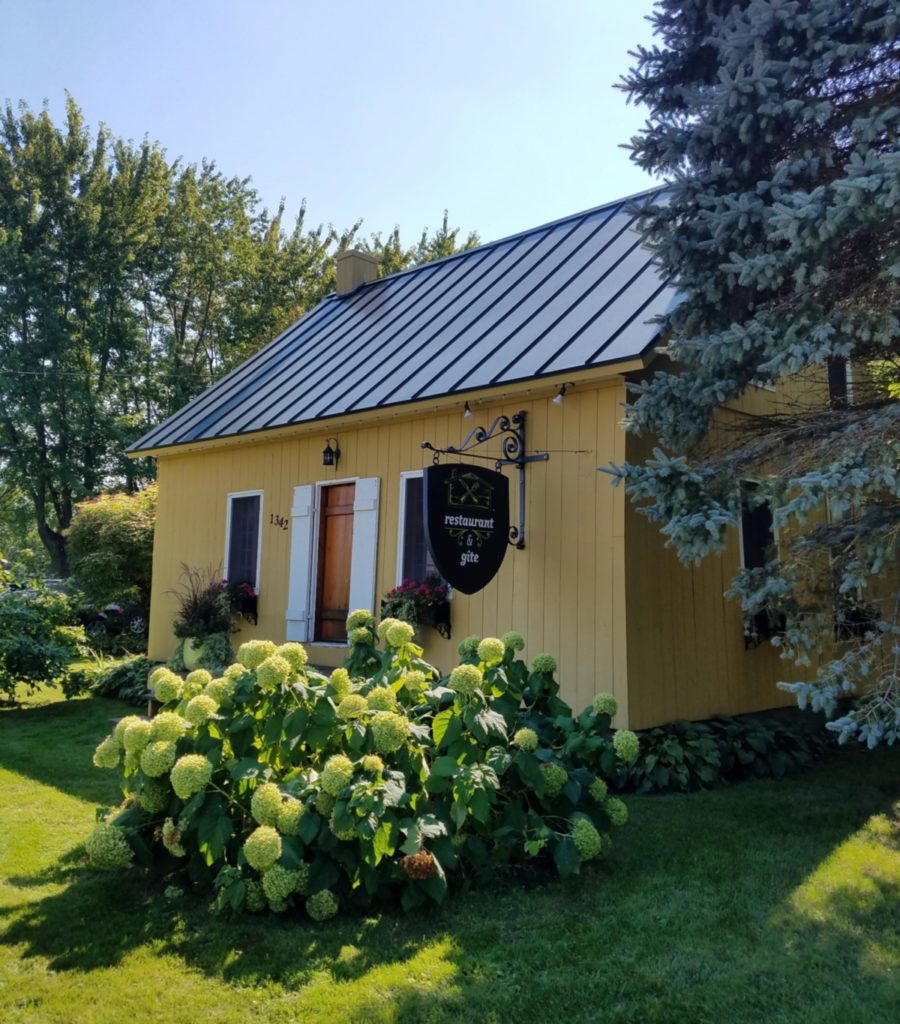
Those same Rougemont apples are the foundation of nearby Michel Jodoin Cider House, where fourth-generation grower Michel Jodoin produces a beautiful, bone-dry, blush pink cider that drinks like a rosé wine. In addition to still and sparkling ciders, the cidery produces a gorgeously syrupy apple liqueur (good over ice cream) and a Calvados-type apple brandy, aged 3 years in oak barrels.
Eastern Townships
The Eastern Townships (Cantons de l’Est) are picturebook pretty, with quaint villages and historic towns tucked into a scenery of lakes, mountains and rolling foothills. Panoramic views unfold one after the other as the land stretches toward the borders of Vermont, New Hampshire and Maine. The region is famous for its vineyards, local produce and farm-to–table restaurants.
Chef Ugo-Vincent Mariotti is the wizard in the kitchen at Auberge West Brome. Nestled in a green valley, this tranquil country resort has a fireplace in every room and a full service spa. The restaurant is a destination it itself, occupying a turn-of the century farmhouse with a potager garden that grows 80 varieties of organic vegetables and herbs.
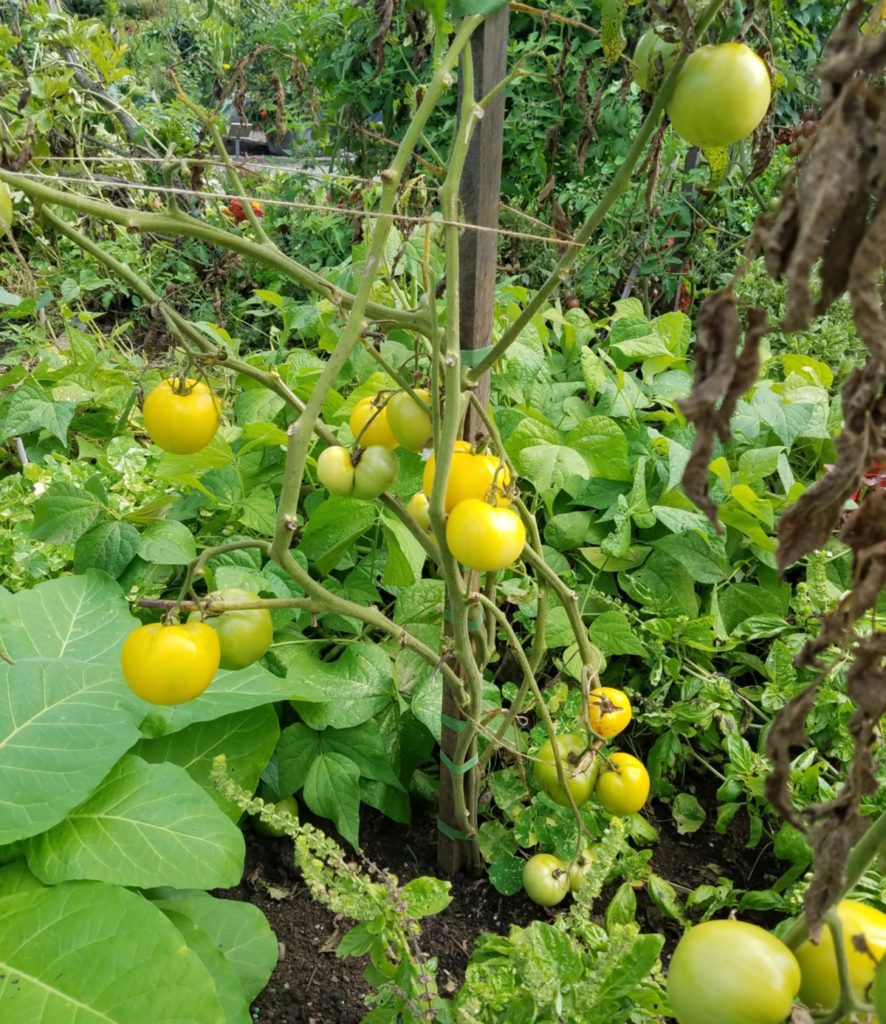
Dinner began with Quebec mushrooms, topped with a soft boiled egg, caviar and shavings of fabulous Pied de Vent cheese from Fromagerie La Station in Compton. Guinea fowl, cooked rare and crowned with foie gras, came with pillows of gnocchi and more lovely mushrooms in a rich jus. A bottle of St Pépin Swenson from Vignoble 1292 in Saint-Blaise-sur-Richelieu was uncorked – and enjoyed. An artfully smeared dessert involving chocolate, ice cream, assorted crumbly bits and summer fruits rounded off a memorable meal.
More sweet treats at Musée du Chocolat in the historic village of Bromont. This garden of guilty pleasures is stocked with bonbons, pralines, truffles and bars from around the world, plus an eclectic collection of chocolate paraphernalia and memorabilia. An all-day brunch menu is on offer — the hot chocolate (made with melted milk or dark) is not to be missed.
The Eastern Townships’ Cafés de Village network is a collection of owner-operated cafés serving simple good food with an emphasis on local ingredients. At Les Trois Grâces in Eastman, seated on a sunny patio surrounded by oversized pots of fragrant herbs, I had an epic sandwich of Lake Brome duck confit, and farmhouse bacon with greens and mayo in a wonderful, crusty bun. A golden lager from Brasserie Dieu de Ciel washed it down.
If you’re in this neck of the woods, don’t miss Vignoble le Cep d’Argent just outside the town of Magog. Brothers François and Jean-Paul Scieur are sixth-generation winemakers from France. A visit to their winery is a unique opportunity to witness the traditional méthode champenoise. Twelve hundred bottles are racked and turned by hand four times a day. Disgorgement (removal of dead yeast after the second fermentation) is also done by hand – a messy business in anything less than expert hands. The resultant wines are elegant and refined – true champagne in everything but name.
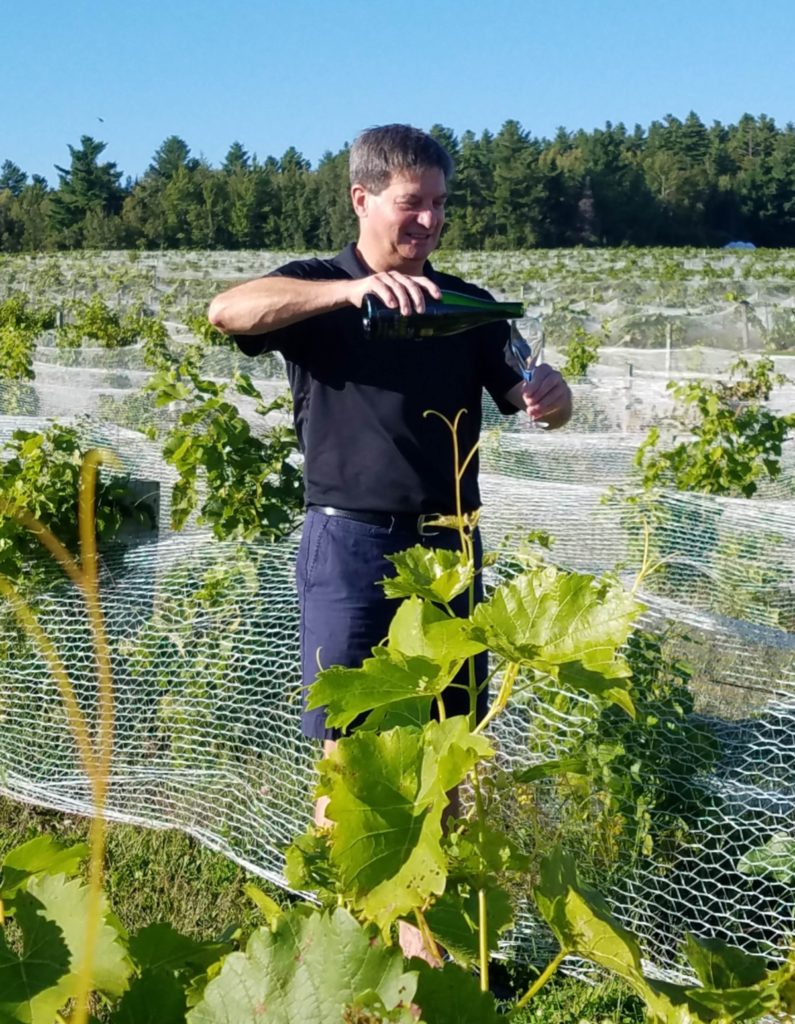
Sherbrooke is the hub of the Eastern Townships and a busy college town located on the Magog River, about half an hour’s drive from Coaticook Gorge. At night the gorge is transformed into the spellbinding Foresta Lumina. Holograms and interactive sound and light installations create a mythical forest inhabited by spirits and fairytale characters — a magical experience for both young and old.
At the entrance to the park is Coffret de l’Imagination, a quirky mashup of gift shop and restaurant. More duck confit on the menu here — this time in a warm salad with asparagus, raspberries, almonds and a tangy, creamy dressing. A blonde beer from Coaticook Microbrewery was a happy pairing.
More happiness on discovering that Laiterie de Coaticook just down the road was still open — at 11 pm. Coaticook Creamery makes old-fashioned ice cream without any nasty ingredients. If you’ve never tasted apple ice cream, take it from me – you need to!
Some 3 million litres of Coaticook milk are used each year by the monks at Abbaye Saint-Benoît-du-Lac to produce their award-winning cheeses. The small monastic retreat established in 1912 by a group of Benedictine monks from France, is now a magnificent example of modern ecclesiastical architecture, with spectacular views over Lac Memphremagog. A visit to the abbey is an opportunity to witness services in Gregorian Chant, and to buy the brothers’ cheese, apple sauce and cider in their expansive gift store.
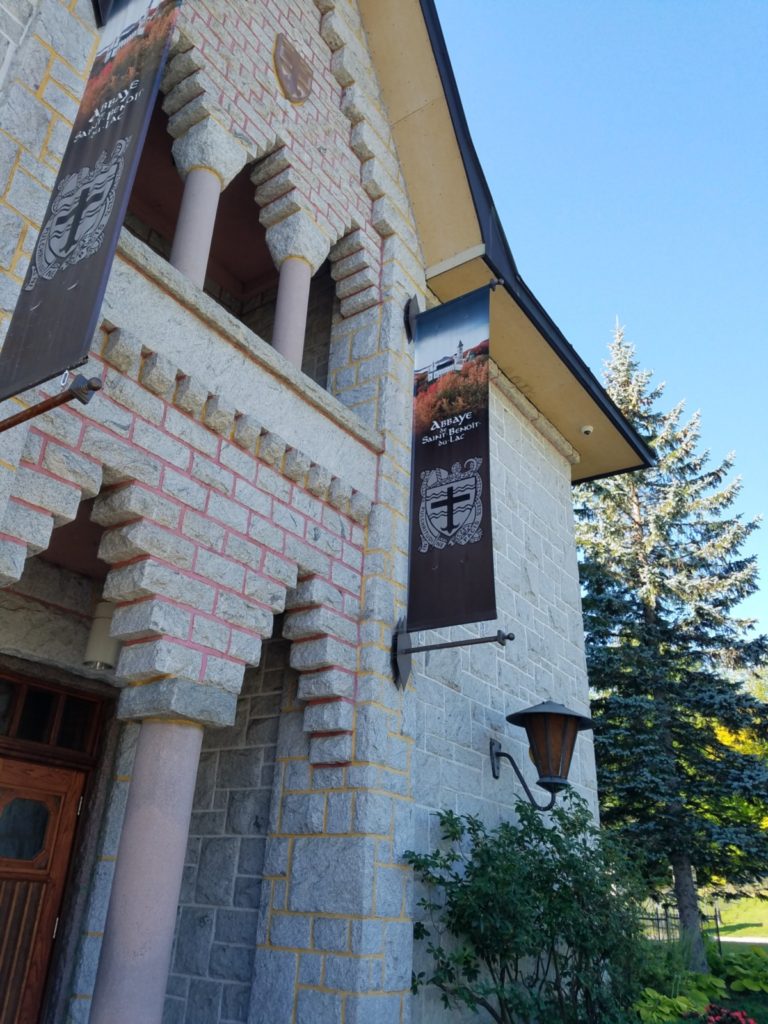
The Victorian village of Knowlton is famously picturesque. The Brome County Museum displays artifacts dating back to the arrival of Anglophone settlers from New England and Vermont at the close of the 18th century. In more recent times, best-selling crime novelist Louise Penny has put Knowlton on the map by making it the setting for her murder mysteries featuring Chief Inspector Gamache. You can pick up a signed copy of her work at Brome Lake Books in the heart of the village, along with Gamache’s favourite, a licorice pipe.
Knowlton is also the headquarters of Brome Lake Ducks and their products feature proudly on local menus. Le Relais Restaurant et Bistro, attached to the Eastern Townships’ oldest inn (Auberge Knowlton, 1849) serves a knockout duck burger, and a duck confit flatbread with figs, roasted garlic and blue cheese. Local beers (the Townships boast no less than 19 microbreweries) and wines from local vineyards round out a menu that celebrates contemporary Townships cuisine.

My last stop on this road trip was at Domaine Château Bromont Hotel and Spa, a sprawling four-season resort at the base of Mount Bromont, just over an hour by road from Montreal. Les Quatre Canards is the resort’s fine-dining restaurant, all old-school elegance, deferential service and classical haute cuisine with a regional focus. I ordered the Guinea fowl, which was braised with girolle mushrooms and sage, with a spicy squash purée, baby pattypan squash and carrots on the side. To drink, an oaky Sevyel Vidal from L’Orpailleur, second oldest vineyard in the region, chosen in consultation with a friendly, knowledgeable sommelier. A classic crème brûlée was the sweet bookend to a delightful ramble through one of the prettiest — and tastiest – parts of Canada.
